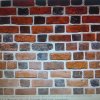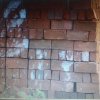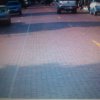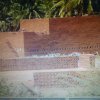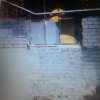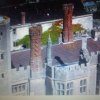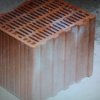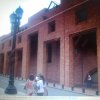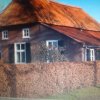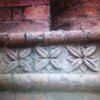
|
On: 2012-05-04 15:32:37
Terri-Lynn Penney changed content of section 104115744482449163 to
|
|
|
What are the different types of bricks?
Bricks are rectangular shaped blocks of hard material, usually clay, that are laid in rows and columns to build structures.
There are different varieties of bricks depending on their role in the construction process.
Firstly there are three ways that bricks can be shaped:
Solid
These are bricks that are flat on all sides, a perfect rectangle.
Frogged
These
have an indented, smaller rectangle on the top. Frogged bricks should
always be laid with the frog at the top so that the load is spread
equally across the width of the brick, not just across the edges.
Perforated
A perforated brick has holes through from top to bottom.
Mud Bricks
The soft mud method is the most common, as it is the most economical.
It starts with the raw clay, preferably in a mix with 25-30% sand to
reduce shrinkage. The clay is first ground and mixed with water to the
desired consistency. The clay is then pressed into steel moulds with a hydraulic press. The shaped clay is then fired ("burned") at 900-1000 ðC to achieve strength.
Dry pressed bricks
The dry press method is similar to mud brick but starts with a much
thicker clay mix, so it forms more accurate, sharper-edged bricks. The
greater force in pressing and the longer burn make this method more
expensive.
Extruded bricks
For extruded bricks the clay is mixed with 10-15% water (stiff extrusion) or 20-25% water (soft extrusion). This is forced through a die to create a long cable of material of the proper width and depth. This
is then cut into bricks of the desired length by a wall of wires. Most
structural bricks are made by this method, as it produces hard, dense
bricks, and suitable dies can produce holes or other perforations. The
introduction of holes reduces the volume of clay needed, and hence the
cost. Hollow bricks are lighter and easier to handle, and have thermal
properties different from solid bricks. The cut bricks are hardened by
drying for 20 to 40 hours at 50 to 150 ðC before being fired. The heat
for drying is often waste heat from the kiln.
European-style extruded bricks or blocks are used in single-wall
construction with finishes applied inside and outside. Their many voids
are a greater proportion of the volume than the solid, thin walls of
fired clay. Such bricks are made in 15, 25, 30, 42 and 50-cm widths.
Some models have very high thermal insulation performance.
Calcium silicate bricks
The raw materials for calcium silicate bricks include lime mixed with quartz, crushed flint or crushed siliceous rock together with mineral colorants
The materials are mixed and left until the lime is completely hydrated;
the mixture is then pressed into moulds and cured in an autoclave for two or three hours to speed the chemical hardening. The finished bricks are very accurate and uniform, although the sharp arises
need careful handling to avoid damage to brick (and bricklayer). The
bricks can be made in a variety of colors, white is common but pastel
shades can be achieved.
Concrete bricks
Bricks of concrete with sand aggregate can be made using a simple
machine, and a basic assembly line method. A conveyor belt adds the
mixture to a machine, which pours a measured amount of concrete into a
form. The form is vibrated to remove bubbles. The form is then raised to
reveal the wet bricks, spaced out on a plywood sheet. A small elevator
then stacks these palettes, after which a forklift operator moves them
to the brickyard for drying.

|
On: 2012-05-04 15:24:33
Terri-Lynn Penney changed content of section 477859065171198190 to
|
|
|
1. a support for my flowers in the countryside. It will look really pretty on the porch.
2. closing the oven (again in the countryside)
3. write your ideas on the road
4. use it as support for a table
5. repair the wall of you house
6. make a traditional plate out of it
7. warm up you back in cold winters
8. cook you vegetables in cool winters
9. pave your road if muddy
10. use it as a decor element if you are into these things
11. step on it to kiss me
12. you can hit someone with it
13. color your skin
14. scratch
15. put it under something you want to paint
16. write future plans
17. hopscotch
18. brake a window
20. trough it in the water. it makes a nice noise
21. give it as a gift so someone that has a better plan for it
22. 2 bricks
23. use it as a passing ticket in some neighborhoods in Bucharest
24. keeps your barbecue warm
25. make almost orange powder
26. make signs on your cloths when you need to resize them because you lost 5 kg (wishful thinking)
27. mark a crime scene if out of white chalk
28. counterpoise
29. sport. work you arms
30. doorstop
31. smash nuts
32. sell it. or at least, try
33. keep it until you get creative
34. stop a broken car from going down the hill
35. sit on it
36. wrap it as a present
37. bed for your doll if she has a back pain
38. just take an artistic picture of it. in artistic pictures everything looks interesting
39. paint it green
40. try to tickle it. try to make it happy. maybe it will smile :-)
41. put a smile on its face and you will have a new friend :-)
42. use it as a stepper.
43. throw it away. forget about the brick. it’s not worth it



